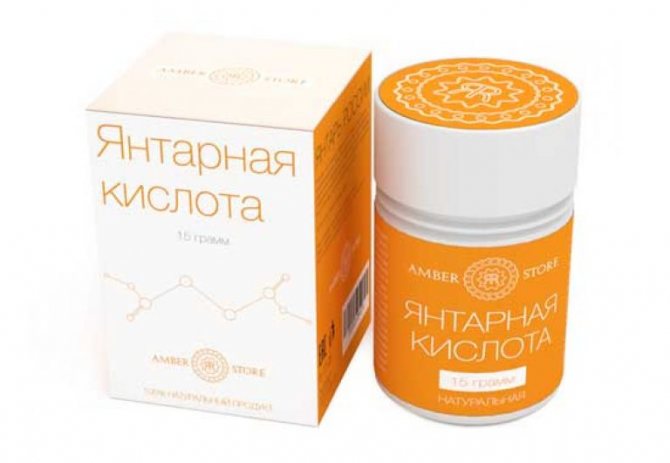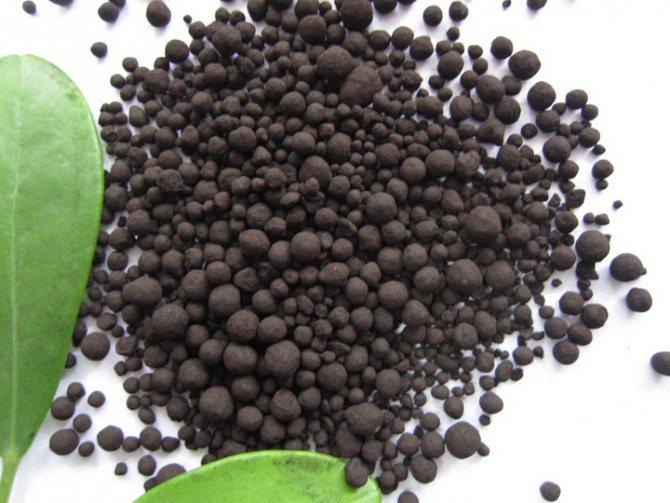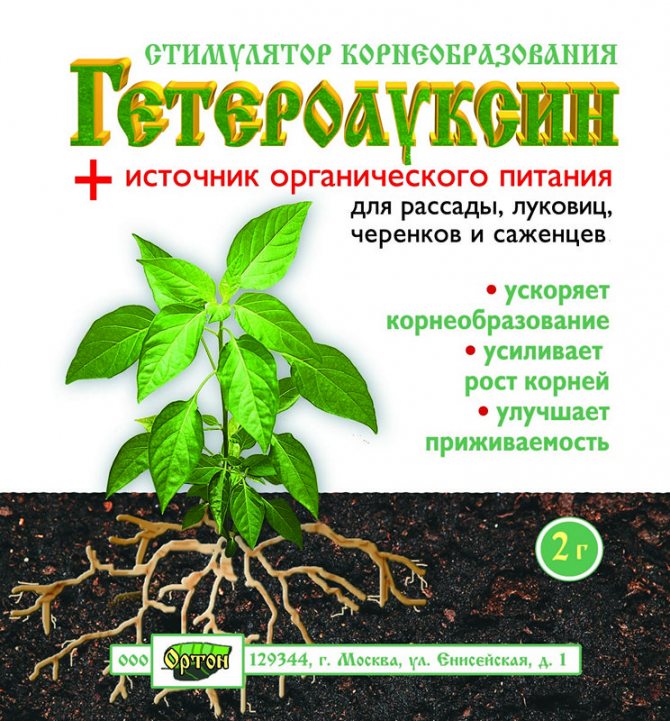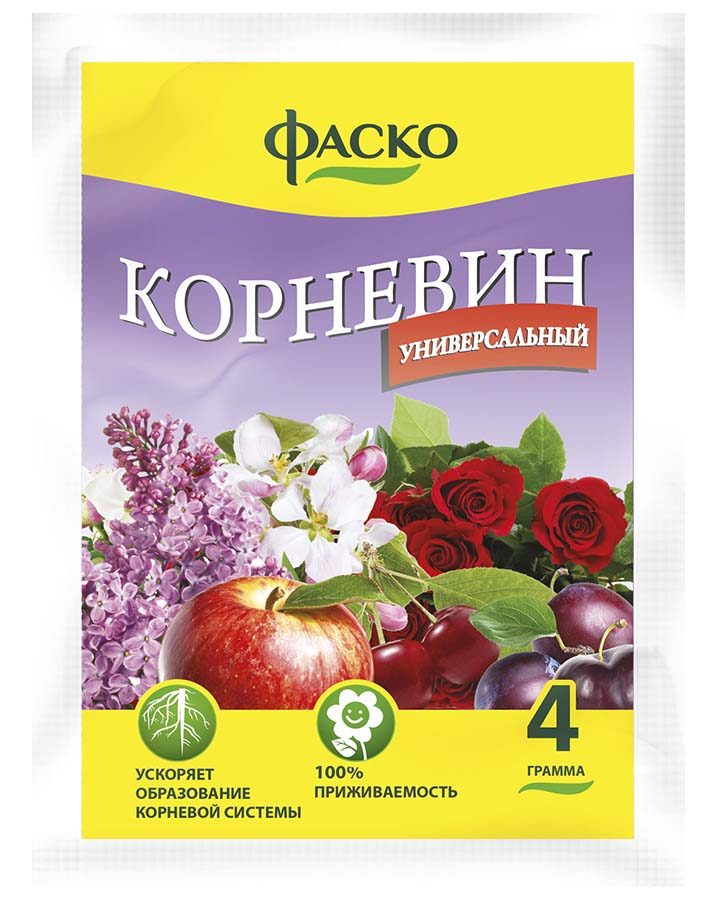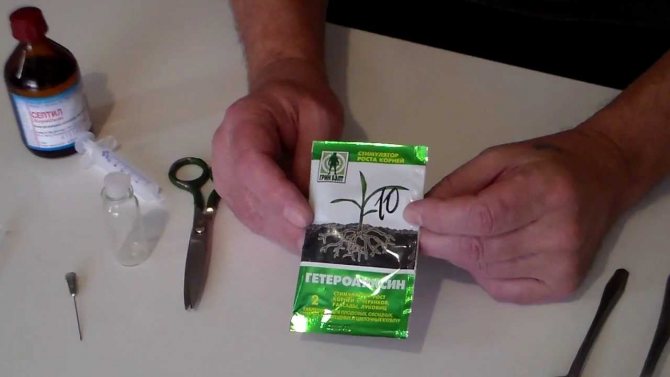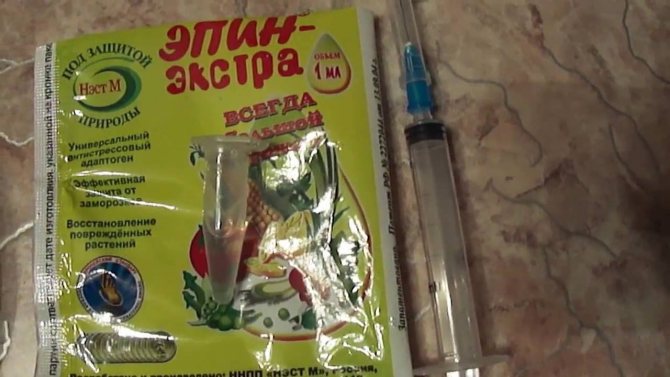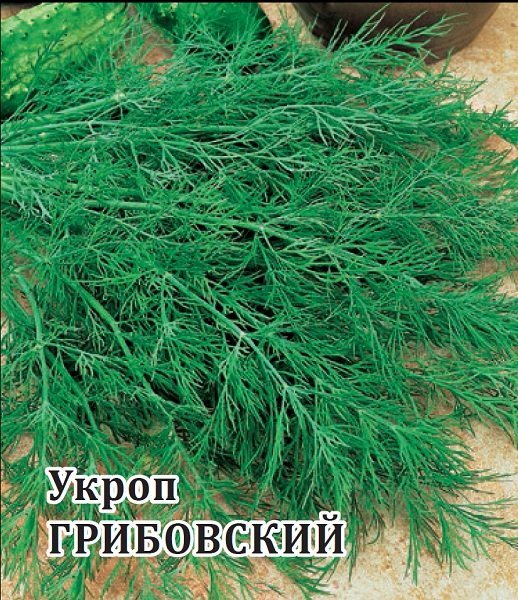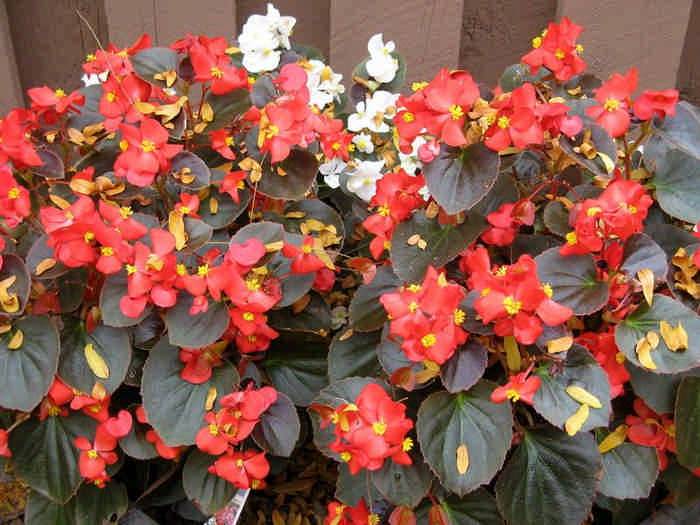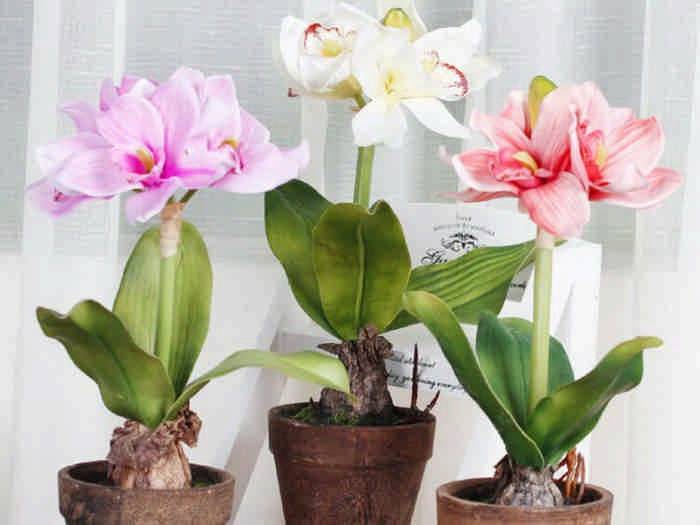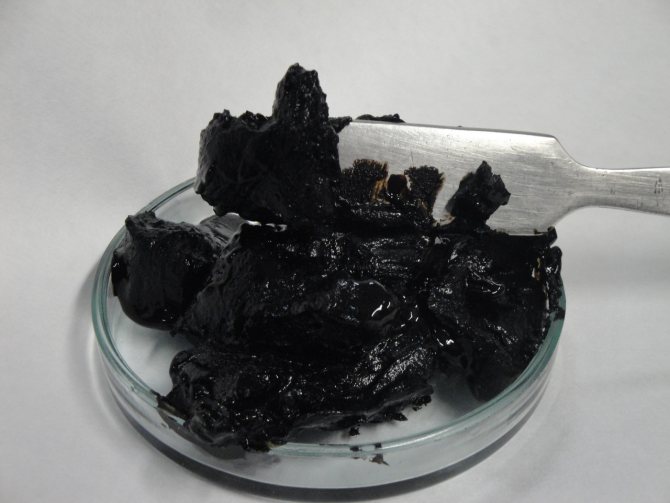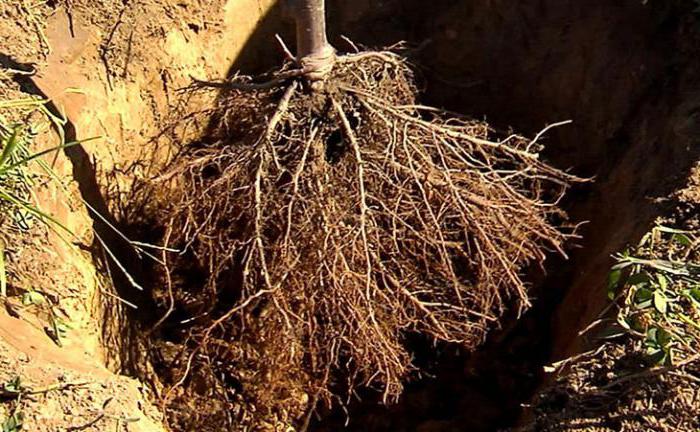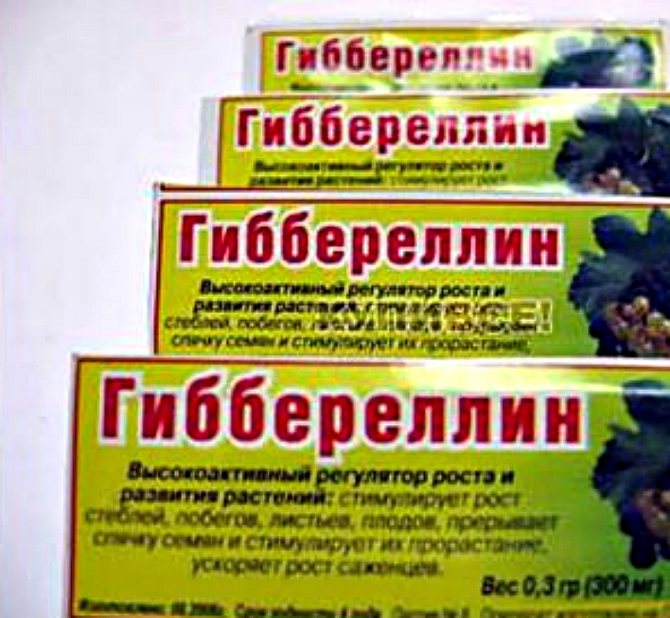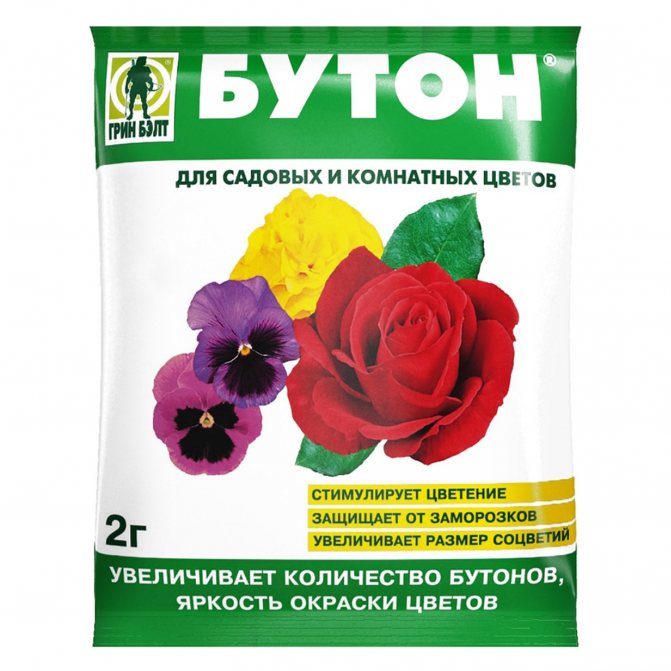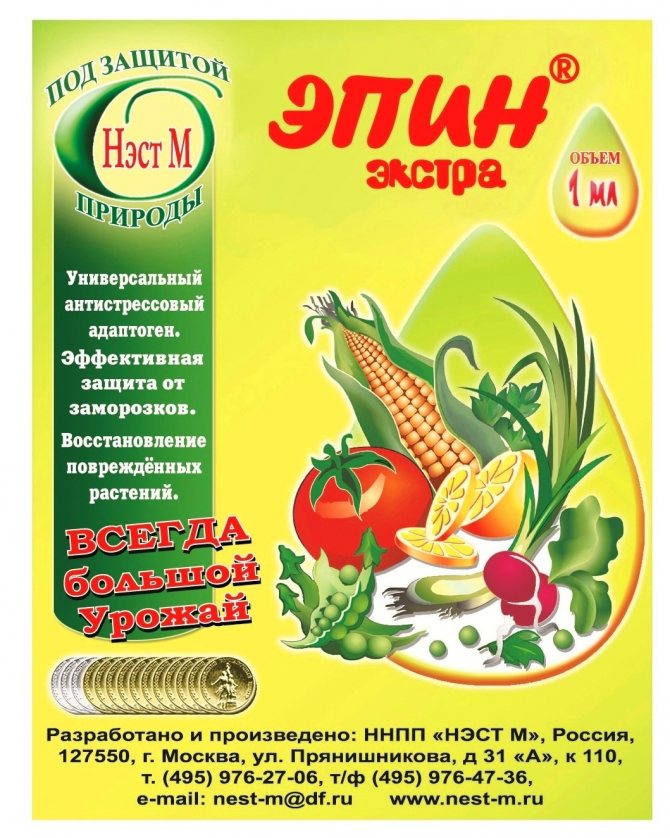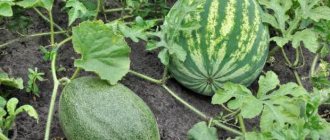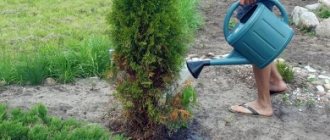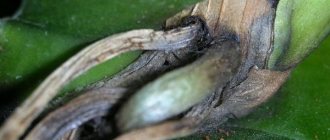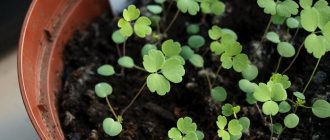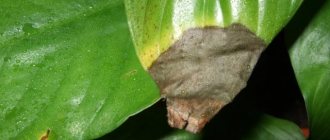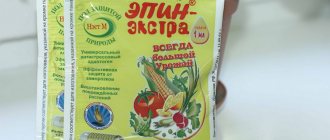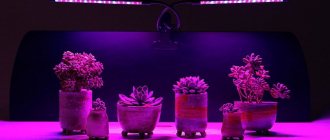Phytohormones, biostimulants, immunomodulators - all these names are used to define the same substances and formulations that are used in home gardening to accelerate growth, lush flowering and high yields of various crops. Plant growth stimulants can be bought at a flower shop, but a home-made preparation will be no less effective. It is important to correctly use the composition that stimulates active plant growth - each has its own characteristics and differences. Then the home greenhouse will delight the eye all year round with juicy, bright greenery and lush color.
What are the plant growth stimulants
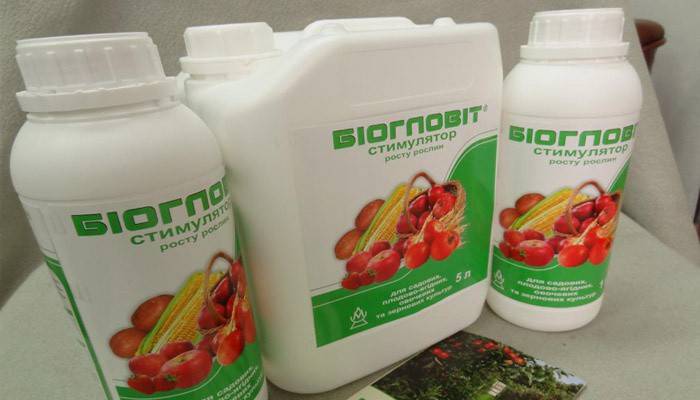
Preparations for regulating plant growth are widespread now. They are of different types. Some funds affect successful root formation, increase the level of seed germination (cucumbers, tomatoes, peppers). Others act more on the thickening of the stem, are able to regulate flowering, the formation of the ovary. These funds play an important role in protecting small seedlings. Plant growth stimulants made from natural extracts of fungi, algae, bacteria, coal and peat are also distinguished. And there are pieces created in a piece, which are also very effective.
Brassinosteroids
Plant transplantation, infections and other types of diseases, sudden temperature changes (frost), accumulation of large quantities of harmful substances (pesticides, nitrates) - all these situations expose plants to stress, lead to a decrease in immunity.
To get out of stress and continue development, plants produce phytohormones - brassins. In addition, brassinosteroids are involved in the ripening of fruits and seeds. This hormone is found in different parts of the plant, but due to the deteriorating ecology, its concentration is too low.
A popular drug, the universal anti-stress adaptogen Epin Extra, restores damaged plants, effectively protects against frost, and also:
- promotes seed germination;
- improves seedling root formation;
- accelerates the ripening of fruits;
- helps to increase yields;
- increases resistance to weather changes;
- increases immunity to diseases;
- removes nitrates, pesticides, radioactive substances.
Succinic acid for plants
Contained in brown coal, animal organisms and some plants, in amber. This drug can be purchased in the form of tablets or a white powder that dissolves well in water. The substance is non-toxic, not dangerous even in case of an overdose. Succinic acid is used to treat weak plants, to stimulate root growth, to form new shoots, and to increase the number of flowers. The tool is considered a universal remedy, but not a fertilizer. Prepare a solution by dissolving 2 g of the drug in 1-2 liters of warm water. Use no later than 3 days later.
Cytokinins
This group of hormones stimulates cell division: it is responsible for the formation of new buds, the growth of young shoots, activates the growth of lateral roots, slows down the aging process of leaves - in other words, prolongs the life and youth of plants. In horticulture, cytokinin paste is used to increase the number of buds on fruit crops.
To do this, an incision is made on the branch and a small amount of paste is put into it with a toothpick. It is necessary to use the drug with great care, since its overdose has the opposite effect - it inhibits the growth of the plant and worsens the general condition.
In addition to the paste, the following drugs are used:
- Keykigrow Plus - a remedy similar to cytokinin paste, made in Canada, of such direction and action.
- Cytodef - additive to pesticides, promotes seed germination, active growth of young shoots, improves fruiting of fruit trees.
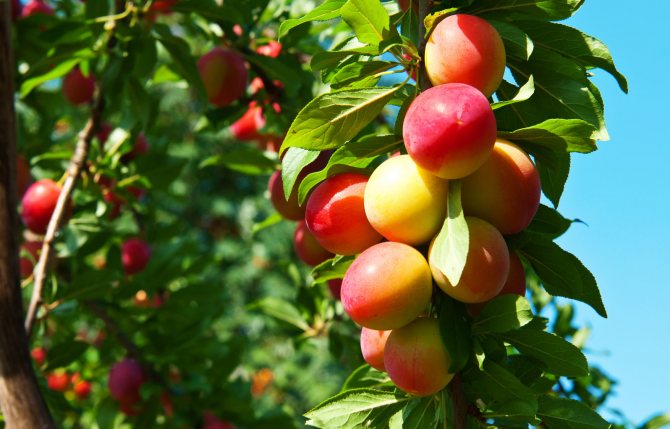

Humic fertilizers
Made from natural raw materials: sapropel, peat, brown coal. Humic fertilizers affect the general condition of the soil. Thanks to the introduction of such substances, its structure improves, moisture capacity, water permeability increase, and density decreases. A plant planted in such soil receives all the nutrients in an accessible (assimilable) form. It is better to process the plants themselves (soak the seeds or roots of seedlings), the effectiveness of the product increases when humic acids come into contact with the plant itself. It is very important to adhere to the instructions when working with the solution.
Multifunctional regulators
This group of funds produces not only a regulatory, but also a general strengthening effect.
Zircon
Activates the formation of foliage, fruiting, ripening of fruits. Thanks to the preparation, the plants are well resistant to fungal infections. With its help, adverse conditions are experienced more easily, adaptation is faster.
Mival, Mival-Agro, Energia-M
The composition of these products is based on silicon particles. The drugs regulate the respiration process, have a positive effect on the growth of seedlings, their flowering, fruiting.


Furolan
It contains small particles of sunflower, supplied with lignin, which improves the quality of ripe seeds. The substance actively fights against plant diseases and infections.
Ambiol
It is used as an immunomodulatory drug. Protects plants from bad weather conditions, increases their resistance to infectious diseases.
Krasnodar-1
The tool is indicated for processing nightshades, potatoes, cucumbers, promotes the early ripening of fruits.
Amulet, Prorostok, El-1, Immunocytophyte
Stimulants based on arachidonic acid. They process leaves, fruits, seeds.
Karvitol
Acetylene alcohol is taken as a basis. The agent in question provides reliable protection against harmful insects, increases the number of grown fruits, and improves their quality.
Lariksin
The composition includes the main component - larch extract, which saves plants from powdery mildew.
Kresacin
Provides normal seed germination in extreme weather conditions.


Albite
It activates the reproduction of beneficial microflora in the soil, thereby increasing the amount of essential microelements absorbed by the roots.
Narcissus
Through the action of the regulator, metabolic processes in the foliage are improved, the root system functions better.
Novosil, Biosil, Verva
These stimulants are based on triterpenic acids obtained from conifers. As a result of the use of drugs, the risk of diseases is reduced, the germination rates are improved, and the yield increases.
Boric acid
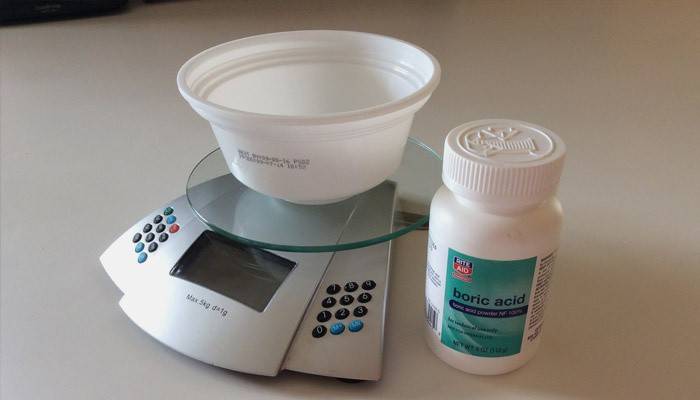

Feeding plants at home leads to the acceleration of their development. Boric acid is often used for this purpose in horticulture and horticulture. Its use also contributes to an increase in the amount of ovary, an improvement in the taste of the fruits obtained. The drug does not cause burns in humans when it comes into contact with the skin, but it can accumulate in the body, and is poorly excreted by the kidneys.An excess of boron for plants is dangerous, symptoms appear: burns on the lower leaves, yellowing, twisting of the upper ones.
- Succinic acid for indoor plants: application
- Soil for orchids - how to make it yourself, composition and proportions
- Fitoverm - instructions for use for fertilizing indoor plants, cost and reviews
When are biostimulants needed?
This is not to say that the use of these products is mandatory in the list of regular procedures for caring for indoor plants. Each grower decides for himself whether he needs it or not. If biostimulants are not introduced, the plants also feel great, moreover, they will feel worse from an incorrectly selected and administered drug.
Therefore, if it is already decided to support the plants in the house with phytohormones, they must be used strictly according to the instructions, in no case violating the dosage and frequency of feeding. For preventive purposes, experienced people recommend using "Epin". It has a milder effect and is well tolerated by almost all crops.
If the plant is already withering away, suffering from diseases and pests, then it is better to switch to "Zircon". It can also be used as a good analogue of "Epin", the latter's code was not found on sale, but the plant needs to be supported.
Experts also recommend that you definitely purchase one of the above products if an exotic beginner appears in your home garden. Tropically, it is difficult for plants to take root in more severe climatic conditions. Of course, they will need top dressing.
Plant growth stimulant for flowering
Biological plant growth promoters such as flowering boosters containing gibberellin are often used by gardeners and gardeners. Even if the conditions do not allow him to release the ovary at this time, some drugs can help this. Such products are suitable for processing indoor orchids, tomatoes, grapes, potato plantations, that is, different crops. Find out about the most popular stimulants below.
Bud
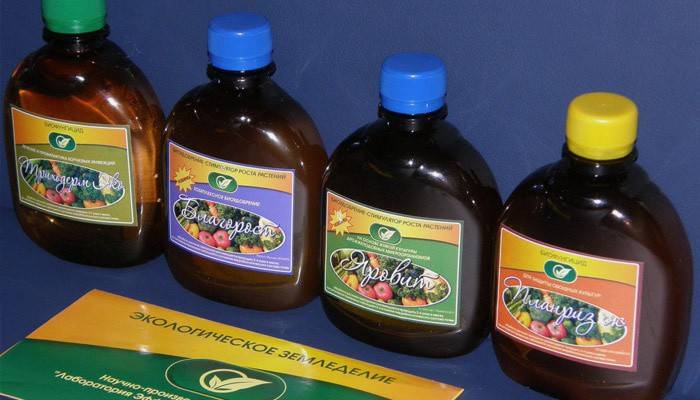

It is a preparation of natural origin, a stimulant of flowering, fruit formation. The active ingredient is gibberellic acid of sodium salts. Means "Bud" increases the number of ovaries, prevents them from falling off, the appearance of barren flowers, improves the amount of the crop, its taste, guarantees the content of vitamins. This plant growth promoter is moderately hazardous and instructions must be followed.
Ovary
Gibbersib (as this drug is also called) was created to increase the number of ovaries on plants, accelerate the ripening of flowers. It is also used to protect against bad weather conditions, even with them, the stimulant significantly increases yields. The working solution (1 g per 1 l of water) is used for spraying on the day of its preparation. At the same phase (budding, flowering), the drug "Immunocytofit" is often used. It is used to create immunity in plants against powdery mildew, gray rot, late blight, bacteriosis.
Traditional methods of enhancing the biological development of plants
The most elementary, and does not require any tweaks - hot shower! Hot water (not boiling water, of course), and with a temperature of about + 50oC, will be not only a prophylaxis against pests, but a good growth stimulator.
Before the procedure itself, all indoor plants need to be well watered, after 1-2 hours put in the bath and turn on the shower.
The temperature of the hot water should be such that the hand can tolerate. Water the plants with a hot stream for one to two minutes. Hot water in the pot will help in the fight against soil pests (if they are started). After the shower, the plants need to be left in the bathroom overnight to dry out, excess water from glass pots. Hot showers can be done in almost all indoor flowers, except Saintpaulias.Such procedures begin in February and continue throughout the season. The results will not be long in coming, they can be seen in a week.
Sugar... For feeding, it is enough to pour one teaspoon of granulated sugar on the surface of the soil in a pot before watering, or pour it with sweet water once a week. For one glass of water, take two teaspoons of granulated sugar. Sugar feeding is loved by cacti.
Castor oil... Top dressing with castor oil is good for stimulating flowering and fruit formation. One teaspoon of castor oil is enough for one liter of water. Shake the solution well before use.
Regular brilliant green (brilliant green solution), and fucorcin (red liquid) with a powerful antifungal effect, will help in the fight against fungal diseases. Bulbs of hyacinths, lilies, tulips and other bulbous and corms in places of damage, as well as scratches and damage to rose stems, especially after winter, can be greased with brilliant green or fucorcin. Scratches and damage, heal and won't rot.
Boric acid... Boric acid solution also stimulates the formation of buds and ovaries. Boric acid can easily be replaced by the well-known "Ovary" in the garden to stimulate flowering and fruit formation in vegetable crops, for example, tomatoes, cucumbers, as well as during the formation of cabbage heads, and even all fruit shrubs and trees. Working solution - dilute a sachet of boric acid in two liters of water. Spray the plants with this solution several times per season: before flowering, immediately after flowering, two weeks after flowering, so that the ovary does not fall off.
An effective stimulant of growth and root formation is considered aloe juice... It is good to soak or germinate seeds in it.
Honey, or rather honey solutionis also a powerful biostimulant. It can be successfully used for soaking and germinating seeds, rooting cuttings. The honey solution can be used in the garden during flowering for better pollination and ovary formation.
It is good to use the honey solution in bucket traps hung on fruit trees to keep the fruit from pests.
Fresh apples... Insist one kilogram of chopped apples in five liters of water for two days, and feeding for all plants is ready. Infusion of fresh apples is especially adored by such plants as Schlumbergera, Zygocactus, Ripsalidopsis.
Milk. For variegated and decorative leafy plants, you can use regular milk as a top dressing. Working solution: dilute 100 ml of milk in one liter of water. Ferns are very fond of such watering. Watering with milk water is alternated after 2-3 waterings with plain water.
B vitamins (B1, B6, B12), as well as vitamin C, can be used for rooting cuttings, soaking seeds, and developing the root system. For the working solution, just a few drops per liter of water are enough.
Yeast solution can with great success replace such a root stimulant as heteroauxin. Preparation of working solution: dissolve 100 mg of yeast in one liter of water. Place the cuttings prepared for rooting into this solution for a day. After that, the cuttings must be removed from the yeast solution, rinsed with water and placed for rooting in a mini-greenhouse or container with water. If you put the cutting in the water to root, do not forget to put a small piece of charcoal there.
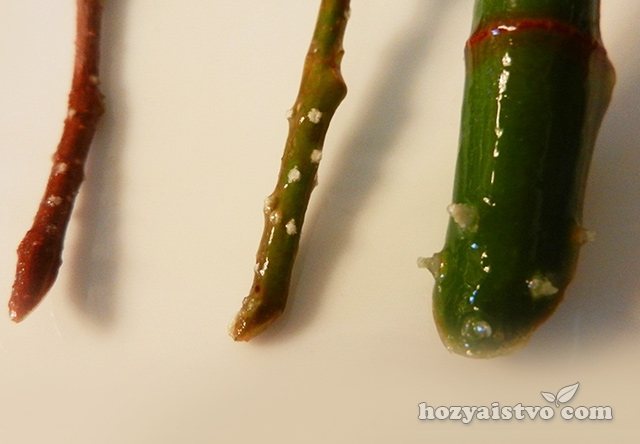

The yeast solution can also be used in the garden. In spring, when planting, they can water all plants, including roses.
Onion peel decoction is perceived by all plants without exception as a full-fledged fertilizer. You can not only water the soil with a decoction, but also sprinkle the entire plant for prevention from pests.Preparation of the working solution: pour one or two handfuls of onion husks with one liter of boiling water, boil for 3-5 minutes, let cool. Then strain the broth and use it! It is advisable to use all the cooked onion peel broth at one time.
Excellent fertilizer for indoor plants - aquarium water... Aquarium water contains many substances that stimulate plant growth. It is recommended to use aquarium water as a top dressing only in spring and early summer, when new shoots and leaves are actively growing. In the second half of summer, when young shoots, seeds are already ripening, as well as for feeding slowly growing cacti and succulents, it is better not to use aquarium water.
Potato broth can also be used as a top dressing for all plants. Cool the water in which the potatoes were boiled, strain and then dilute strongly. I tested it, it works! Of course, at first I was very afraid, I thought that the earth in the pots would suddenly turn sour, then, nevertheless, I took a chance. I'm happy with the result.
The water in which raw meat was washed, can be used as a top dressing for all plants. For feeding indoor plants, it is recommended to insist this water for two weeks so that it ferments and becomes suitable for irrigation. I watered the plants in the garden with such water without insisting. Dahlias, who often got water after washing their meat, bloomed much earlier than others, the bushes were gorgeous, and the buds were dark. So that's checked too.
Decoctions and infusions from other plants are the best suited not only for feeding, but also help to cope with pests.
Wormwood infusion increases the immunity of plants, helps to cope with rust on the leaves of pelargonium, stock-rose, lavater, rose, and is also used in the fight against aphids, various caterpillars and other leaf-eating insects. Preparation of working solution: wormwood can be used dry and fresh, pour cold water and let stand for 1-3 days. Used without dilution. This infusion is very effective in the spring.
You can hold the wormwood infusion for two weeks, let it wander. It is recommended to dilute such an infusion tenfold. It can be used for watering and spraying indoor and garden plants.
As has long been noted, some garden plants have not only healing powers, but also restrain the onslaught of pests. For example, gypsophila and lavender prevent aphids and ants from attacking neighboring plants, marigolds and calendula protect neighboring plants from nematodes and other underground pests, garlic kills fungal and viral diseases, including powdery mildew. Therefore, infusions and decoctions from these plants have exactly the same strength and can be used with great success as biological means of combating pests and diseases.
Nettle infusion increases the immunity of plants and is also used as a complete top dressing for all plants. Nettle infusion is prepared according to the same principle as wormwood infusion. You can insist the nettle in water for a day or three and water the plants with this infusion, or you can wait until fermentation begins. To not smell so much, you can add a little borax to this infusion. After fermentation, strain the nettle infusion, dilute with water at a concentration of 1:10. Such herbal infusions are good to do outdoors in summer. And the grass is abundant, and the house does not smell. To combat aphids, you can spray the plants with undiluted nettle infusion.
Nettle infusion is a natural and versatile complex with micro- and macroelements; in its effect on plants, it surpasses all chemical growth stimulants.
Infusion comfrey can be used as a top dressing in the second half of summer, when plants need a lot of potassium to prepare for winter.
The preparation of a comfrey infusion is similar to the preparation of an infusion from wormwood or nettle. Comfrey infusion can be used for all plants, but it is especially useful for plants that need a lot of potassium and a little nitrogen for full development. Spraying with comfrey infusion over the leaves very quickly removes the signs of potassium starvation. In the comfrey infusion, the main nutrients - nitrogen, phosphorus and potassium - are in this proportion of 3: 1: 7.
Horsetail decoction will help not only strengthen plant tissues, will help to cope with rust on the leaves, powdery mildew, spider mites. Horsetail can be used both fresh and dry. Preparation of working solution: pour cold water over the grass and leave for a day. After that, boil the infusion with horsetail, let it cool, strain into a glass or plastic dish. Horsetail decoction can be sprayed on both indoor and garden plants. Horsetail decoction can be added to water for irrigation. Against the spider mite, for a lasting effect, multiple spraying with horsetail decoction should be carried out.
Valerian juice... Chop fresh valerian grass, add a little boiled or rain water, squeeze. Pour the resulting valerian extract into a glass container and store in the refrigerator. The container with valerian extract must be shaken well before use. This extract is enough to add only 30 drops to a bucket of water. It is recommended to water and spray all plants, including orchids. They say that this is truly a "magic remedy". Isn't it HB-101, which sells for big money?
Root formation stimulant
The phytohormones gibberellins help seeds germinate. Auxins, on the other hand, are considered to be substances responsible for stretching cells in plant tissues. The product containing auxins is a root former, an accelerator of stem growth. For growing seedlings, it is very useful to have a preparation on hand that stimulates their growth from the very first day. There are many drugs that are used for this purpose, you will learn about them later.
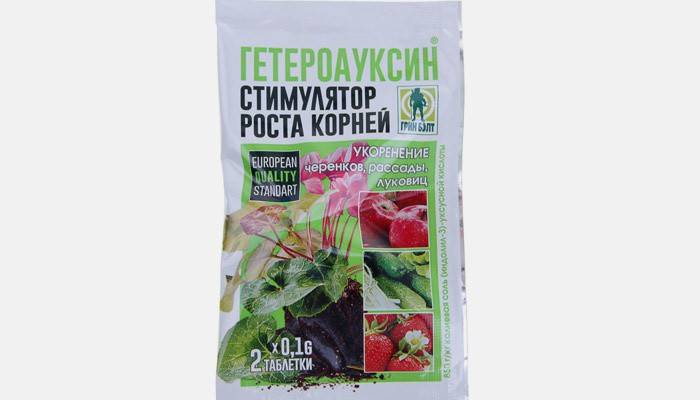

- Fungicides - what is it, the mechanism of action of drugs, rules for the treatment of indoor and garden plants
- Banana peel as a fertilizer for indoor plants and vegetable gardens
- Potash fertilizers: names and applications
Kornevin
Growth stimulator for plants, accelerates root formation. Available on sale in sachets of 5 g. Can be used dry: the stalk is powdered before planting. A solution (a bag for 5 liters of water) is poured over small seedlings after planting in the ground. Some experts argue that for better root formation it is necessary to process compost (you can take "Baikal", "Sodium humate"), which fertilizes the soil. This will provide increased yields, provide protection to plants during frosts, and improve the microflora of the soil.
Zircon
This drug is not only a root growth stimulant. It acts as a development enhancer, a rooting agent for small seedlings, a root former for seeds. The action of "Zircon" helps young plantations to survive even in adverse weather and light conditions. The use of a stimulant reduces the risk of diseases (bacteriosis, late blight, fusarium, etc.), while it is practically harmless to people, animals, insects. The drug "Athlete" has also established itself as an excellent assistant in stimulating the growth of seedlings.
Heteroauxin
It is useful for root formation, but the work of the nutrient does not end there. Treatment with a solution helps seedlings to take root, increases the germination of bulbs and seeds, prevents leaves and ovaries from falling off. "Heteroauxin" increases productivity, seed yield from fruits, increases their quality.For transplanted seedlings, a solution is prepared (2 tablets per 10 liters of water), in which its roots are soaked for 20 hours. After planting, watered with the rest of the liquid. "Kresacin" has a similar effect, the seeds in its solution are soaked for 5 hours before sowing.
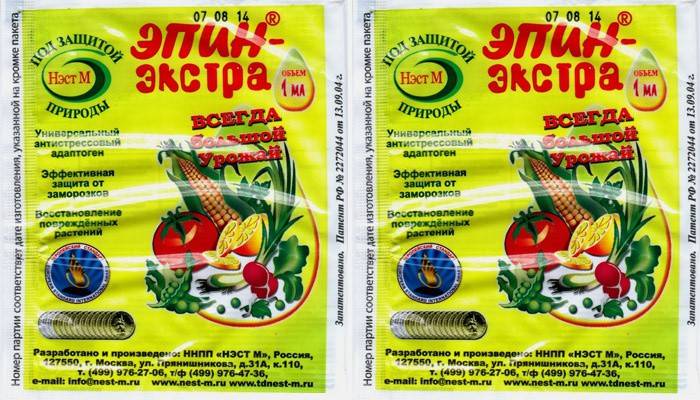

Epin
It is used to rejuvenate tired, weakened plantings, stimulate root formation, and increase the level of protection against pests and diseases. For spraying, 5 ml of the drug is diluted in 5 liters of water. In the evening, each leaf is thoroughly wetted. The solution is not stored for more than 3 days. "Etamon", "Potassium humate", "Prorostok", "Ecosil" have a similar effect and are very helpful in the reproduction of plants, the acceleration of their growth, rooting, and increased productivity.
Varieties of phytohormones
Phytohormones, which control all important processes in plant development, were discovered not so long ago - in the 20th century. It turned out that they affect the germination of seeds, the formation of roots, and are able to enhance the processes of cell division. These are small chemical compounds that are very potent at low concentrations.
Phytohormones are synthesized in all parts of the plant; they can be transmitted not only within one species, but also between individual crops. Auxins, gibberellins and cytokinins are the best studied compounds.
Auxins
Auxin, a growth hormone, was first isolated from oat sprouts. At that moment, scientists studied how the seedling would behave under one-sided lighting. Thanks to the unknown substance found, the stem was kept straight, because auxins controlled its bending.
With the help of auxins, the plant controls the intensity of cellular respiration in unfavorable conditions, enhances the activity of enzymatic substances in the stage of seed germination. Under the influence of auxins, growth processes prevail in tissues, and destructive processes are inhibited, which is very important for the survival of crops in spring.
Gibberellins
Gibberellins were accidentally found in fungus-infested rice shoots. Japanese scientists isolated a substance from the tissues of the fungus that led to an increase in the growth of rice crops. This stimulant works in the same direction as auxins, promoting cell division and attracting nutrients.
Cytokinins
Substances support the process of cell division, inhibit the aging process. Most of the cytokinins are found in the part of the plant where the active tissue formation is taking place. For example, at the stage of pouring the fruit - at the tops.
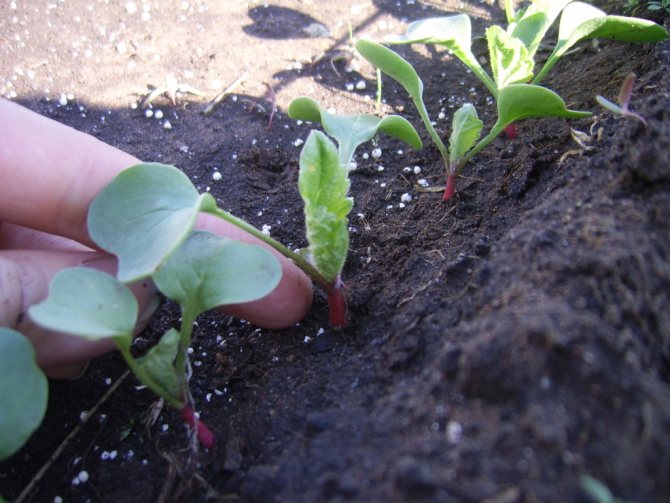

Brassinosteroids
These substances contribute to the formation of the immune system of plants. These include substances based on humic and fulvic acids, other natural compounds that are found in honey, plants, mushrooms, algae and marine crustaceans.
With the help of these preparations, you can grow products of high quality and valuable in terms of nutrients - vitamins, sugars, starch. Substances help plants recover after treatment with fungicides, pesticides, moreover, they increase the effectiveness of chemicals by about 20%.
Unfortunately, phytohormones do not solve all the problems of gardeners, do not cancel regular fertilizing and soil restoration with the help of organic substances.
Abscisic acid
Abscisic acid inhibits the action initiated by auxins and gibberellins, that is, it leads to inhibition of the growth of buds, leaves and shoots. This results in shedding of foliage.
Ethylene
Ethylene is formed in ripening fruits and increases respiration in tissues. At the time of bud formation, it promotes the formation of female flowers. During high humidity, when the root part is flooded, ethylene initiates the formation of tissues on the stem, through which oxygen enters the plant and prevents it from dying.
Ethylene helps plants defend against pathogenic microorganisms - fungi, bacteria, by synthesizing proteins that destroy the cell membrane of pathogens. Protective compounds - phytoalexins - are formed under the influence of ethylene.
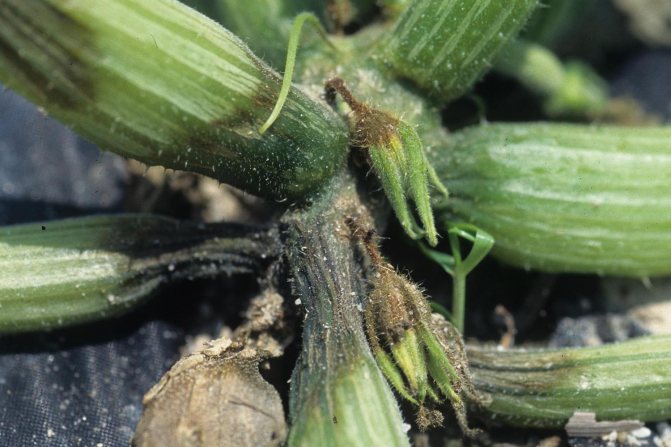

How to use plant growth biostimulants
Each drug should only be used as directed. Any deviation can lead to sad consequences: the opposite result or uncontrolled plant growth. There is a kind of ritual that is performed by many gardeners and gardeners to grow different crops. You can learn more about it below (be sure to keep the sequence). To achieve growth stimulation will help:
- Solutions of "Heteroauxin" or "Kornevin". Soak the seeds in them for 6 hours, then plant them in the ground. This will increase the germination rate.
- Preparations for strengthening and growth of roots (Etamon, Epin). After the sprouts appear, you need to take care of the formation of a good root system. It is advisable to spray according to the instructions.
- Rooting means (for example, "Kornevin"). Before planting seedlings in open ground, it is necessary to soak them in a stimulant solution. After that, it is recommended to process the plantings with Etamon twice a month to strengthen, adapt, and accelerate flowering.
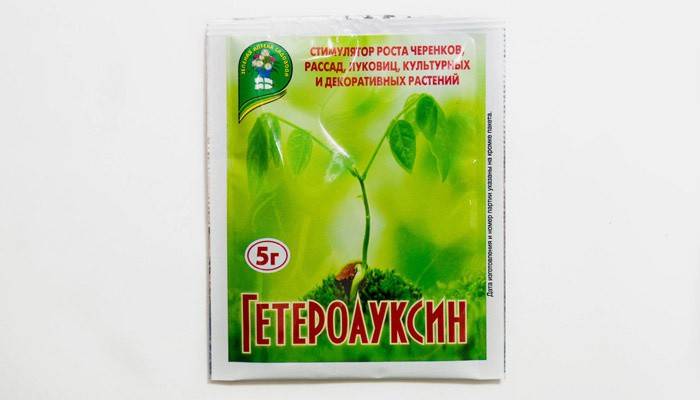

Recommended scheme for the use of phytohormones
As mentioned, all of these drugs will not have the expected effect if the dosage is reduced or increased and the recommended dosage regimen is violated. Florists are advised to strengthen and feed indoor plants according to the following scheme:
- treat seeds during germination with "Heteroauxin";
- as soon as shoots appear, start using "Epin";
- spray seedlings with Etamon - the plants will quickly throw out their leaves and bloom;
- before flowering, apply "Bud" for a better ovary.
If fruit-bearing crops are grown, then you can use such a tool as "Athlete". Regular use of this biostimulant can increase the yield by two to three times.
Is it possible to prepare a plant growth regulator yourself
It is not necessary to buy means to accelerate the growth of seedlings or your indoor pets. You can find everything you need for this at home. For example, aloe vera juice is very useful for creating roots in the cuttings. The tops of any grass from the yard, ground or soaked, is also a great stimulant. It is advisable to water seedlings or flowers with a solution of germinated and grated barley (insist on water). Growth stimulants for plants can also be prepared from a decoction of dry mushrooms, honey, egg white, willow twigs, onion husks.
To apply or not, the choice of gardeners
But it should be admitted that all the moments of the effect of drugs have not yet been fully studied. Many gardeners note, for example, that by using stimulants and accelerating the growth of plants, we get active colonization of the last aphids and spider mites. Probably, the changes that occurred in the cells and tissues of plants increased their attractiveness for phytophages.
If you follow the rules of agricultural technology, then the use of growth stimulants allows you to provide crops with all the necessary nutrients. Which, in turn, will accelerate development and increase yields. It is only important to choose the right drugs and use in strict accordance with the manufacturer's instructions. This is the only way to guarantee the safety of using chemicals on site.
Did you know that you don't miss any of our material if you subscribe? Subscribing is easy: you just need to enter your email in the form below this article and click on the "Subscribe to the newsletter" button. And you will always be aware of our publications!
But, on the other hand, in the beds of organic farming, plants, microorganisms and fungi themselves regulate the production of biologically active substances.Moreover, this happens precisely at the time when the need arises. And gardeners use drugs at a convenient time for themselves ... Only the gardener can decide whether to use growth stimulants or improve the structure of the soil and improve agricultural technology. Or competently combine, applying the latest scientific developments.
Fertilizer for plants at home
Fertilizers for plant growth can be made at home. Nettle top dressing is easy to get in the spring and summer. Collect the stems before the seeds appear. Crushed, poured into a non-metallic container, filled with water and left to ferment. After two weeks, the process is complete, and the resulting liquid can be used to fertilize the plants. Before watering, dilute with water in a ratio of 1: 9. Disadvantage - cannot be cooked in the apartment because of the strong smell. Don't water the legumes.
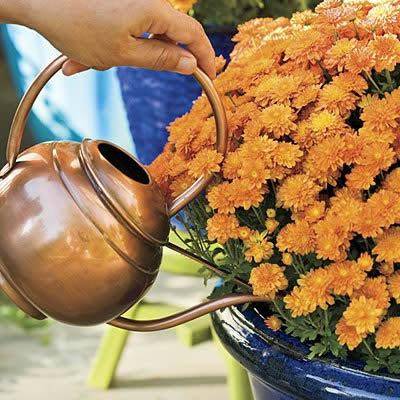

Onion husk infusion contains many trace elements that any plant needs. Moreover, it will destroy bacteria harmful to them. Boil a handful of husks for two minutes in a liter of water, let it brew for two hours and spray the plants.
Usually, after eating a banana, the skin is thrown away. It turns out that a plant needs the elements it contains, in particular potassium, to grow. It is crushed and added to the ground when the plant is transplanted. The skin rotted under the influence of moisture, giving its trace elements to the flower. If you are not going to transplant soon, dry and grind it with a coffee grinder. Dilute the resulting powder with water and water the plants.
Coffee grounds (sugar-free!) Are a good food for flowers that need nitrogen. It not only fertilizes, but also improves the quality of the soil.
Roses need iron for normal development. A rusty nail, carefully tucked under the root, will help to saturate them with this element. Other metal objects (but not stainless steel) can be used. Roses will thank you with bright colors.
The most common drugs are:


Kornevin. Powder based on indolylbutyric acid for dusting cuttings. "Maxiclon". Gel (indolylbutyric acid + vitamin) is applied to cuttings. A very effective product, it needs to be stored in a cool place. "Ukoreit"... Charcoal powder with indolylbutyric acid. Provides additional protection against rotting of cuttings thanks to the action of charcoal. "Heteroauxin"... Beta-indoleacetic acid tablets or powder, stored in a cool, dark place. Processing is carried out by soaking the sections in a solution of the drug. "Kornerost" (heteroauxin). Indoleacetic acid potassium salts, soluble capsules. Method of use: soak the ends of the cuttings in a solution for 10-16 hours. "Kresacin". Triethanolammonium salt of orthoreoxyacetic acid, liquid in a dropper. Usage: soaking in a solution for 10-12 hours.
Mechanical influences will also help
There are also methods of mechanical action on the cuttings, which make it possible to facilitate root formation. For example, hawthorn cuttings are slightly flattened with a hammer before soaking in any of the above growth stimulants, and shallow notches are made on dogwood and irgi cuttings with a sharp budding knife or a straight razor, this increases the yield of rooted cuttings by 25-30%.
In general, be aware that the use of root formation stimulants, which can serve as excellent stimulants also for the growth activity of the root system of seedlings, is fully justified and bears fruit. But stimulants alone, be they the best and most expensive, without observing the temperature regime, humidity regime, timing of cutting and planting cuttings and seedlings, only stimulants will not be able to work a miracle.Therefore, they should be considered only a part of a large set of measures related to the reproduction and cultivation of plants of a wide variety of species, from the humble gumi to the majestic walnut.
Phytohormones and their role in plant life
Phytohormones are substances produced by plants. Different groups are responsible for different processes in their body. So, auxins direct the formation of the root system and distribute nutrients. Gibberellins are responsible for flowering and fruit formation. Cytokinins regulate shoot growth.
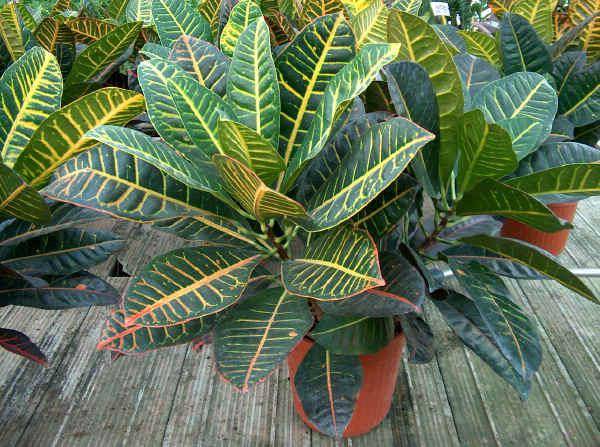

For a long time people were not against leading these processes, but they just did not know how. With the discovery of phytohormones, they got such an opportunity. Having studied their structure and mechanism of influence, scientists were able to create synthetic hormone substitutes. They, like natural ones, are divided into groups according to the principle of their effect on the plant organism. These are stimulants of plant root growth, and drugs that accelerate flowering and fruit production.
Aloe juice as a stimulant
You can add 5-7 drops of fresh aloe juice to the water with the handle. Scarlet juice has healing properties, therefore it accelerates the appearance of roots and stimulates the immune system of the cuttings as a whole.
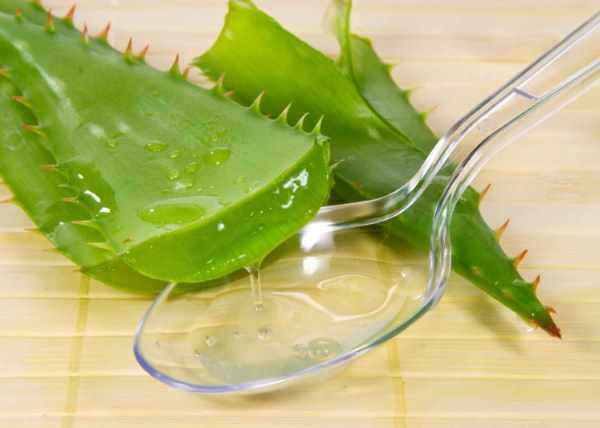

Leave the cuttings in water with aloe juice for 2 days, then plant the plants in the usual way. If you leave the cuttings longer, the roots will appear directly in the solution.
Use of the drug "Vympel"
This product is mainly used by large and medium-sized farmers to stimulate crop growth. However, sometimes "Vympel" also offer specialized stores "Goods for the Garden" to gardeners. In addition to strengthening the root system, this drug is able to accelerate the processes of photosynthesis and crop growth. Also "Vympel" improves the quality of sugars in plant tissues, dehydrates and destroys fungi and bacteria, maintains the balance of humus accumulation, increases plant resistance to adverse environmental factors. In addition to improving the quality of vegetables, fruits and berries, this product can significantly reduce crop losses due to drought and increase the efficiency of fertilizer use by 20-30%.
According to the manufacturer's recommendations, the Vympel growth stimulator can be used for any garden crops at any time of the year. However, to enhance the development of cucumbers and root crops, summer residents are advised to use it in the 3-5 leaf phase, for onions and cabbage - at the beginning of budding. The treatment is carried out with a solution prepared by dissolving 10-15 g of the product in 10 liters of water. In most cases, this amount is enough for spraying 2 acres of plantings.
Root formers - what is it?
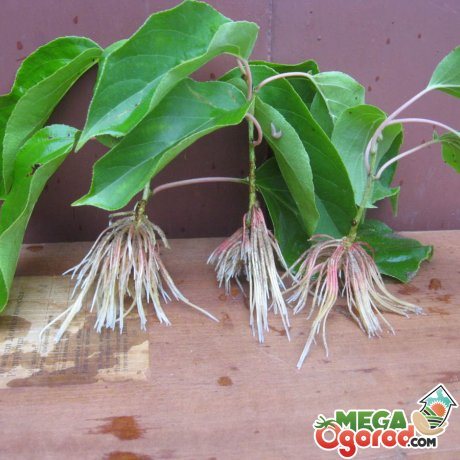

Root formers are preparations that promote the rapid formation of a powerful root system. Most of them contain phytohormones that speed up the metabolism near the cut site. As a result of their activity, a large amount of nutrients are sent there.
The phytohormones of the root former help the phytohormones found in each plant to form callus and roots faster. This is especially evident on cuttings of conifers and fruit trees.
It is advisable to use root formers for cuttings in such cases:
- For better rooting of perennial crops (herbaceous and trees).
- To eliminate the impact of stressful situations.
- To save dying plants. This method is used in exceptional cases.
Read also: Sunflower honey: what is contained, what is useful, who should not eat, how to use it for medicinal purposes
It is impossible to use root formers systematically. After all, this is a very powerful remedy.
Security measures
Like any other substances, plant growth stimulants are distributed according to the degree of danger to humans and animals. In this regard, Epin belongs to the 4th class, the other three drugs belong to the third.That is, plant stimulants "Kornevin", "Kornerost" and "Heteroauxin" are quite dangerous for humans. Therefore, when working with them, you should follow some measures to prevent harmful effects on the body.
Prepare a solution from these stimulants with rubber gloves. At the same time, it is worth wearing clothes specially designed for performing plant processing operations. It is also advisable to use a mask that protects the respiratory tract.
Spraying with such preparations should be done in the direction of the wind in the morning or evening. After finishing the treatment, hands and containers should be rinsed under running water.
What are the techniques to facilitate root formation?
Various techniques contribute to the rapid formation of roots: ringing, etiolation, furrowing, incision of the bark near the buds by 2 mm, bending of the branches.
Banding - This is the removal of a strip of bark 2-3 mm wide or the constriction of the selected shoot with a soft, usually copper wire. As a result, the outflow of plastic substances is delayed, which contributes to better root formation on green cuttings. This technique is used on slightly lignified shoots of the current year's growth 12-14 days before cutting.
Etiolation - strapping the shoot with opaque material - foil, paper or black non-woven material - about 2-3 weeks before grafting. This leads to a redistribution of plastic substances in the shoot and an increase in the ability to root.
Furrowing - application of shallow longitudinal cuts (grooves) on 1–2 lower internodes and nodes. The influx of growth substances increases to the wounds, and this facilitates the development of roots.
Fertilizers for plants from the store
There are a lot of them on sale. For example, dry fertilizer Agricola. It persists for a long time due to the form of release. Dissolves with water before use.
Using such means, you need to remember a few rules:
- Before use, the soil under the flower should be watered with water.
- Do not feed recently transplanted plants.
- Do not fertilize dormant flowers.
- The stronger the flower grows, the more fertilizing it needs, and vice versa.
- Better to apply less fertilizer than overdose.
- Do not change the type of fertilizer often.
If you still have mineral water in your bottle, you can pour it on indoor plants, especially tropical ones. It contains many biologically active substances. Watering often will prevent the pot from becoming limescale.
Plant growth stimulants
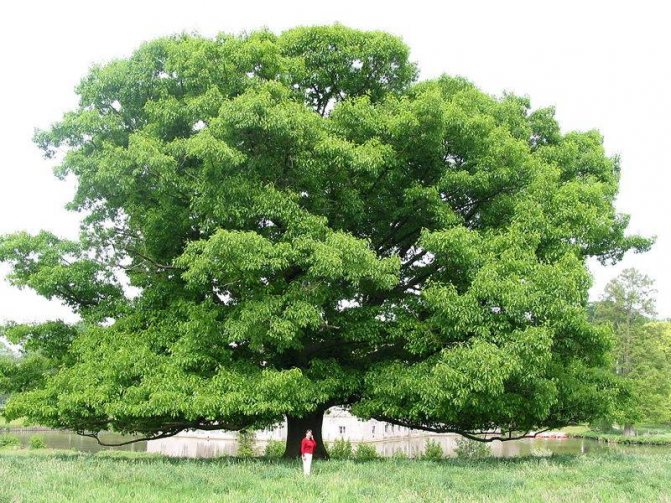

Plant growth stimulants (regulators)
- substances with high biological activity, enhancing cell division, and hence plant growth. According to their composition, they are divided into natural and synthetic. Phytohormones are natural, and their analogs are synthetic.
Most people know that our body contains hormones - regulatory substances. Some hormones are responsible for metabolism, others for growth processes, and others for the processes of reproduction of the body. They are found not only in humans and animals, but also in plants. They are called phytohormones, they belong to the category of natural or biostimulants. Just like hormones in animals, phytohormones regulate all vital processes in the plant organism.
The study of the structure of phytohormone molecules made it possible to create a new large group of synthetic substances - analogues of plant hormones. Synthetic stimulants include funds that activate the activity of phytohormones, as a result of which a temporary increase in growth processes is noted.
Synthetically obtained stimulants are identical to natural phytohormones in their structure. They are used to increase the activity of phytohormones. These are artificial analogs of phytohormones and means to enhance plant growth.
All of the above stimulants are used in the form of aerosols, aqueous solutions, emulsions and vapors.
Growth regulators (stimulants) of indoor plants.
To enhance plant growth, root cuttings and speed up the flowering period, growth promoters are often used in indoor plant growing.
In addition to indoor plant growing by amateur florists, these preparations have found their application in companies professionally engaged in the cultivation of indoor plants for sale.
For all indoor plants, in order to maintain immunity, successfully overcome the autumn-winter period, it is necessary to use commercially available growth stimulants and effective feeding.
To date, plant growth regulators have found practical application in the following main areas:
- revives weakened and rejuvenates old plants by stimulating shoots and root systems;
- restores damaged plants after stress (planting, transplanting, storage, long-term transportation, non-optimal illumination and temperature, pesticide treatment, salinity, etc.);
- causes early and abundant flowering, intense coloring of leaves and juicy color of flowers due to increased synthesis of chlorophyll and other pigments;
- induces increased resistance to phytopathogens (especially root rot), pests, unfavorable growing conditions;
- causes an active increase in vegetative mass
- activates the enzyme and hormonal systems of the plant, etc.
Application of growth stimulants (regulators)
Some of them are designed to soak the seeds before sowing to enhance the vigor of germination and germination. The purpose of others is to improve the appearance of ornamental plants, increase the resistance of indoor plants to diseases and pests.
When grafting plants
- both with green and lignified cuttings, root formation stimulants are used, but treatment with general-purpose preparations also gives a good result. In this case, they are used for better rooting, accelerated root formation on cuttings, and the development of a more powerful root system. Cuttings are treated either with dry powder, consisting of a mixture of a growth stimulant with charcoal, or immersed in an aqueous solution of the desired concentration for a short time.
Growth stimulants
increase the resistance of plants to sudden changes in temperature, frost resistance, survival of young seedlings during transplantation. A prerequisite for using growth stimulants is the exact adherence to the dosage. The same drug in different doses can act as a stimulant of root formation or growth, but at an increased concentration it acts as an inhibitor, that is, it inhibits, inhibits the growth and development of plants. Therefore, they must be applied with great care and skill.
We suggest you familiarize yourself with the catalog of biologically active additives and stimulants available for sale used in plant growing. Many additives are not fertilizers, but their role in stimulating plant growth cannot be underestimated. Our biological and mineral additives and growth promoters are used both in soil and hydroponics, also used alone or in combination with complete fertilizers, such as, for example, the Flora series. You just need to buy and try our supplements and stimulants.
Growth stimulants for hydroponics, biostimulants.
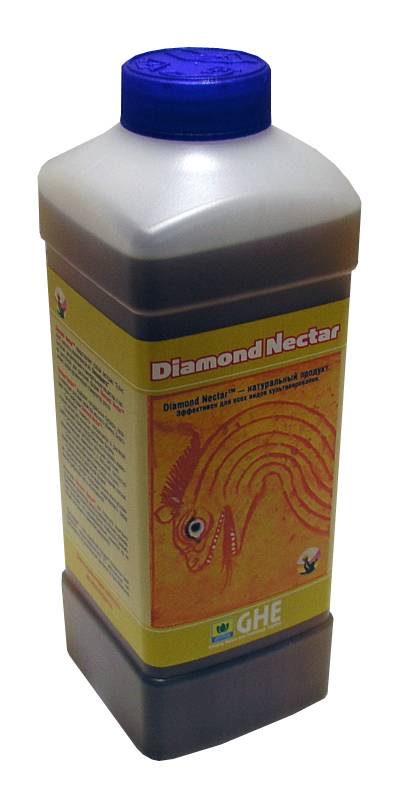

Diamond nectar
Natural organic stimulant
Metabolism activator. Diamond Nectar is not a fertilizer. It is a dietary supplement to any plant nutritional complex. Diamond Nectar is applicable on all substrates and soils.
Diamond Nectar is 'Fulvic Acid', an acid extracted from Leonardite. Leonardite is the end product of a humification process that lasted 70 million years. It is extracted from unique deposits in New Mexico.Rich in organic and mineral substances, in a form readily available to plants, Diamond Nectar is an organic growth stimulant.
Diamond Nectar contains natural buffers, chelates with high ion exchange properties. Thanks to these properties, Diamond Nectar:
- Converts the elements in solution into lighter forms for the plant to assimilate.
- Allows you to more productively use the existing nutrient solution and the potential of the plant.
- Nutrients more easily penetrate the cells of the plant, stimulating its growth.
- Meets the needs of the plant by providing organic ingredients in an accessible form.
- When cultivated in hydroponics or in ‘closed ground’ it allows to simulate a living environment close to natural.
With Diamond Nectar, you will benefit from time, quantity, flavor and aroma of your harvest. Also, your plants will receive a bonus of resistance to various diseases, which will immediately affect their general condition and the final result.
Go to the store
(buy biostimulant)
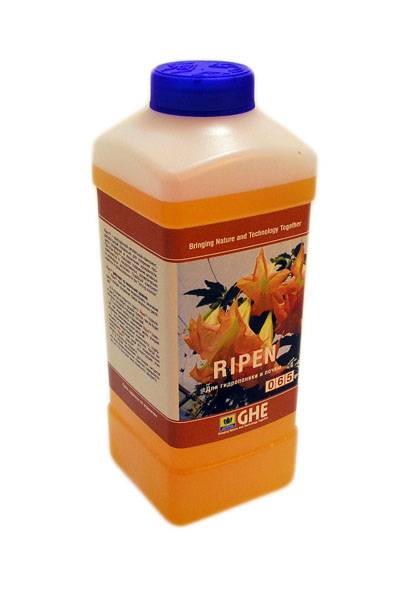

Ripen
Feeding at the late flowering stage.
For all growing methods: hydroponics and soil.
Nutrient to accelerate flowering and increase yields. Increases the content of active ingredients in medicinal, aromatic and culinary plants.
Ripen is a nutrient complex for slow flowering and end-of-life plants.
Structure:
Available Phosphate (6% P2O5)
Soluble Potassium (5% K2O)
Magnesium (Mg) 2.5%
Sulfur (S) 2%
Contains refined mineral salts.
Ripen is a nutrient formulated to speed up flowering and increase yields. At the same time, Ripen ™ increases the content of active ingredients in medicinal, aromatic and culinary plants.
A similar component is known in the industry as the ‘forcing solution’ Ripen ™, a compound of refined mineral salts and buffers created in our laboratories with high precision. At the final stage of a plant's life, it is precisely the accuracy in the selection of components that is important: the plant at this stage is a very fragile biological system with reduced assimilation.
Ripen operates on several levels:
- Gives the plant a signal about the end of its life cycle, which stimulates the ripening process by accumulating all the vital forces at this stage.
- Forces the plant to strengthen the immune system and increase the content of active substances.
- Provides the plant with the necessary elements in an easily digestible form.
- In the case of accumulation of nitrates or other microelements by the plant, it helps to assimilate these deposits, improving the taste of the crop.
Properties
- Outdoors, Ripen ™ allows you to harvest quickly before it gets spoiled by cold and wet weather.
- In indoor conditions, Ripen ™ helps you simulate end-of-cycle conditions by accelerating the maturation of the slowest plants.
- In the event of a serious invasion of pathogens or insects, Ripen ™ allows you to accelerate the natural cycle and get at least some yield, otherwise - lost.
- Increases the active ingredients contained in medicinal plants. When you grow a plant for its medicinal properties, Ripen ™ will increase the concentration of these substances in the final product.
Go to the store
(buy biostimulant)
What happened to the flowers
At home, I diluted 1 g of powder for 5 liters. water, poured and sprayed with a solution all the house plants.
The result was awesome! And it became noticeable after a week:
- The arrowroots have released new leaves and shoots.
- The begonias also liked the feeding: the ever-flowering one, for example, gave 4 powerful lateral shoots at once, flowering increased.
- The pandanus has new leaves not only at the top, but also from under the leaves of the first, second and third rows.
- Aglaonems released new leaves, some gave children.
- Good growth of leaves was given by cuttings of mandarin, ficus, chlorophytums, peperomia, alocasia, syngonium, oleander.
- Opuntia - it first started with thorns, and then released 12 side segments.
- A stalk of African portulacaria, which had not rooted for a long time, released 2 lateral shoots.
- The Decembrist, agave, aih-rizon liked the "treat", the growth of leaves in fat women and peasants noticeably revived.
- I would also like to tell you about the use of succinic acid for cacti and succulents. I did not expect rapid growth from them, but I was very surprised when a month later Haworthia released 10 children at once.
- The cacti were also pleased.
However, I do not advise reintroducing succinic acid to cacti and succulents: the opposite reaction may occur. Fertilizer should be applied once or repeated no more than once every 2 years.
Potatoes for rooting root growth
Remove all eyes from a large potato, make holes for the cutting, insert the cutting. We put potatoes with a shank in the ground, cover with a plastic bottle without a bottom, with a screw cap.
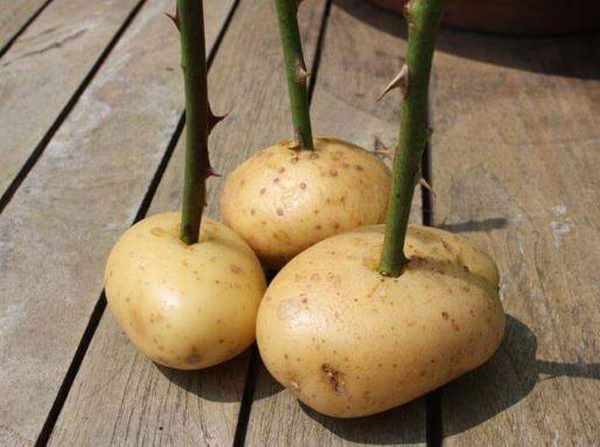

Water the potatoes through the neck in a bottle, it will store moisture for a long time, the plants will quickly give roots. This method is suitable even for plants that do not propagate well by cuttings. Cuttings receive a lot of nutrients from potatoes.
Gardening tips for using Epin
It is best to use this stimulant, according to gardeners, for:
- spraying plants when picking;
- soaking seeds;
- spraying when rooting seedlings;
- maintaining plant immunity.
Plants are treated with Epin three times per season. This can be done at any convenient time. But the greatest effect from its use is observed if spraying was carried out before or after flowering. It is at this time that the largest amount of hormones is formed in the tissues of garden and horticultural crops.
Root former for cuttings: an overview of the best
- View the full image
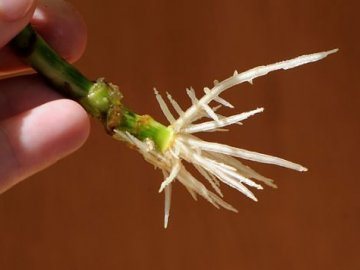

Root formation in cuttings
Root formers - what is it?
Most popular drugs
Do-it-yourself root formers
Features of the use of drugs
Many shrubs, herbaceous perennials and some trees propagate by cuttings. In order for the roots to form on them sooner, special root-forming stimulants are used.
Tips for summer residents on the use of "Kornerost"
The main active ingredient of this drug is indolyl-3 acetic acid. Use "Kornerost", the instructions for the use of which are also simple, can be absolutely for any agricultural and vegetable garden crops. In addition to watering for better root formation, summer residents are advised to use it for:
- improving crop growth;
- increasing the chances of rootstock and scion growing together;
- increasing the number of babies on the bulbs.
This popular preparation is, among other things, also a very good growth stimulant for seedlings. Its use primarily contributes to the strengthening of plants, as well as the rapid development of their roots and green mass. In order for the seedlings to take root well when transported to open ground, its roots are dipped in a solution of 0.05 g of the drug per 10 L of water. For the treatment of seedlings, 0.2 g of this agent is used.


